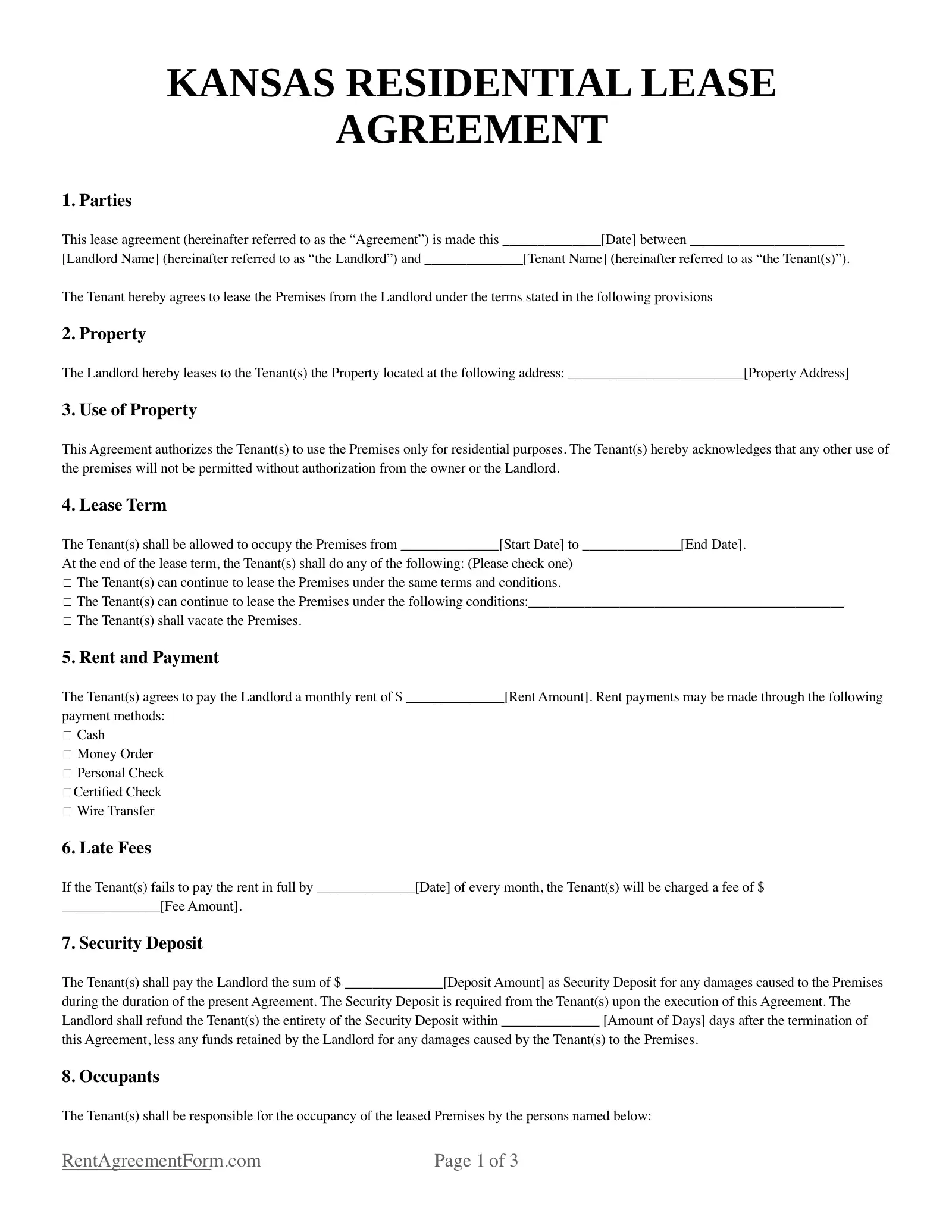Kansas Residential Lease Agreement Form
The Sunflower State is an attractive place to live because of its affordable housing and low cost of living. If you want to live in Kansas City, you’ll need to know the basics of the Kansas residential lease agreement form. It is a legal document that outlines the agreements between a landlord and a tenant. It contains the terms of use of a residential real estate property.
The landlord and tenant must agree on the terms of the lease before signing the document. The fillable forms have spaces where the landlord and tenant can write down the specific conditions of the lease. The most important details are the rent amount and due date. Normally, rent is due every first of the month, but the affected parties can agree on another date.
Before the lease agreement form, the tenant must have an approved rental application form. After meeting with realtors, the tenant must submit a rental application to the landlord to formally show their interest in leasing a specific property.
The rental application comes with a non-refundable fee that will be used for the applicant’s background check. Once an application is approved, the tenant and landlord can begin talking about the conditions of the lease.

Required Disclosures
- Lead-Based Paint Disclosure - According to federal law, landlords must inform their tenants if a property was built before 1978. All properties built before that year use lead-based paint, a health hazard. Landlords must thus provide their tenants with educational materials about its dangers (Lead-Based Paint Hazard Reduction Act of 1992 § 1018).
- Authorized Persons - The landlord must submit the name and address of any person who is authorized to accept legal notices on their behalf. The name and address must be listed on the lease agreement form and should be updated if the authorized person changes (KS Stat § 58-2551).
- Inventory and Condition of the Premises - The landlord and tenant must conduct a walkthrough of the rental property within five days of tenancy. The goal is simple: take note of the property’s conditions. The landlord must repair any damages while the tenant must try to keep the property in good condition (KS Stat § 58-2548).
Rent Grace Period
There is no legal provision for a rent grace period in Kansas unless the landlord and tenant agree to have one.
Security Deposits
Kansas is a state with more unique legislation regarding security deposits. If the property is unfurnished, the security deposit should be equivalent to one month’s rent. If the room or unit comes with furniture, the security deposit should be worth up to one and a half months’ rent.
At the end of the tenancy or when the tenant moves out of the property, the landlord has 30 days to return the security deposit. It is standard practice for the landlord to deduct an amount from the security deposit in case of property damage or unpaid rent.
Since the initial walkthrough entails creating a record of the condition of the property at the start of the lease, it comes in handy for assessing damage at the end of the tenancy to determine if any damages were caused by the tenant.
Should there be allowable deductions to the security deposit, the landlord must provide the tenant with an itemized list of charges within 14 days (KS Stat § 58-2550).